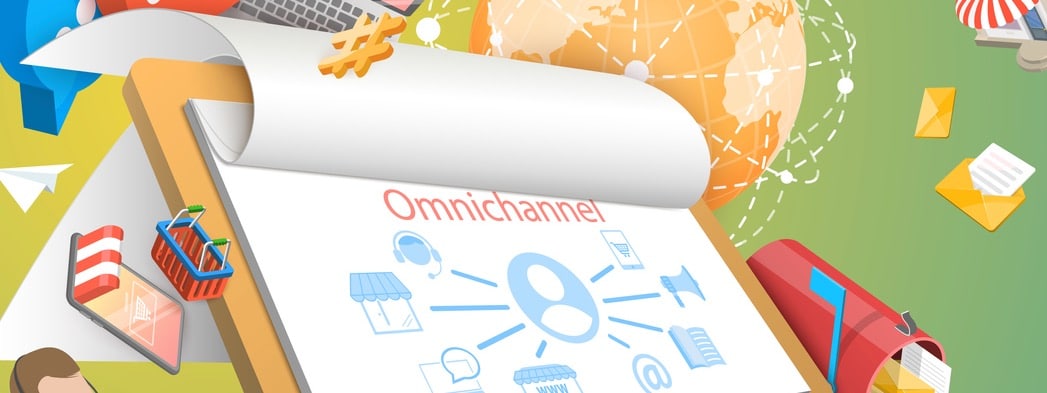Recent research from Forrester and others has shown that better customer experience leads to higher revenue growth. As the world enters a more challenging economic climate, cloud communications platform Infobip has identified five top trends for customer experience and omnichannel communications to delight customers and maintain a competitive advantage this year.
“Customer experience can make or break a business. So, against a more difficult economic climate, we expect brands to focus on delighting their customers to remain competitive,” said Ivan Ostojić, chief business officer at Infobip, in a news release. “But organizations may struggle to meet customer demands and provide the experiences their customers have come to expect without scalable and easy-to-use omnichannel communications. That is why Infobip continues to innovate and co-create with our clients and partners to ensure we are the one communication platform for every platform that helps businesses connect with people that are best for them.”
The firm’s five trends include:
1. Composable tech platforms will drive speed and scale
In an increasingly cost-conscious environment, businesses and brands will look for composable technology platforms to reduce implementation time and deliver transformation more quickly. In the past two years, 50 percent of companies have had to transform at great speed, according to an Accenture survey of 4,053 C-suite executives.
To meet this speed of change, businesses will need to adopt plug-and-play composable tech platforms. Such interoperable solutions enable organizations to quickly integrate new capabilities through easy integration, increasing time to impact while reducing infrastructure costs and implementation timelines. Data from Accenture shows that companies with high interoperability unlocked up to five additional percentage points of revenue growth than companies with low or no interoperability.
Composable tech platforms will drive innovation, augment customer experience and deliver faster and more extensive digital transformation.
2. Hyper automation and intelligent bots will deliver efficiencies
Automation can come in many forms, but the breakthrough in customer experience will be in the adoption and scaling of automated bots. As ChatGPT shows, chatbots continue to advance by leaps and bounds. The firm expects to see scaling text bots alongside progress with voice and video bots. As a result, businesses and brands will create and deploy bots that bring a new level of automation, speed, and availability.
Such intelligent virtual assistants will help scale customer service, drive efficiencies and enable businesses to up- and cross-sell. More advanced bots will also enable brands to enhance marketing and sales automation. Such bots will answer product or pricing questions, schedule deliveries and take payments—all within a customer’s favorite channel.
3. Hyper-personalized end-to-end customer experience journeys enabled by AI and analytics
Businesses will look for more intelligent ways to operate to drive efficiencies. Hyper-personalized end-to-end customer experiences enabled by artificial intelligence and analytics will become a critical part of the customer journey, providing better experiences for customers and agents.
AI and analytics can already respond to basic queries. This year, Infobip expects organizations to use AI and analytics to predict customer behavior and drive real-time responses. For instance, companies will provide hyper-personalized messaging that instantly adapts to each individual and their preferences and ways of communication.
Businesses will look to apply such tools to all parts of the customer journey to create hyper-personalized experiences to increase loyalty and drive sales. This trend will be accelerated by the increasing shift to first-party data and automation in writing AI code.
4. Immersive hybrid ‘phygital’ experiences will bridge the real and online worlds
In 2023, Infobip expects a world where the physical and digital meet to create immersive experiences that customers want, where and when they want them. Such experiences help enhance customer engagement while providing greater convenience around ordering, paying and delivery. Retailers will continue to integrate technology into their stores, using data to personalize what customers hear, smell and see. For instance, geofencing, a location-based marketing tool, enables retailers to send automatic alerts, such as coupons or promotions, when a customer enters the area around the store.
Meanwhile, eCommerce platforms will use virtual and augmented reality to create a 21st-century digital store. Brands are enabling customers to ‘try on’ clothes through virtual dressing rooms. Customers can see how they look in the clothes they might want to buy, all from the palm of their hand. Infobip expects the first launch of a digital replica of a product using AR or VR.
Some companies such as Amazon and Alibaba are combining the retail and eCommerce experiences. Hema, Alibaba’s fresh food-focused ‘New Retail Store’, allows customers to shop in-store or through its app. It provides customers with augmented reality integrations in-store, where they can scan products to reveal their origins, deliver items and pay with facial-recognition technology. Amazon is harmonizing the physical and digital to deliver highly personalized customer experiences. It uses customer data from many sources—from online browsing activity to how customers navigate stores—to tailor store experiences to everyone.
5. Conversational user experiences
Everything will become conversational this year. Customers now have access to more channels and devices than ever before. Whether for marketing, support or sales, they increasingly want conversations with a business or brand on their preferred chat channels.
By creating a richer and more proactive experience, Infobip expects to see two-way conversations scale hugely across the customer journey. This year, we will see greater app-like experiences in chat apps. For instance, Infobip has developed an AI-powered chatbot for Uber that enables its customers to order a ride through WhatsApp, creating a seamless booking experience.
Many of the major tech companies including WhatsApp, Google and Apple will launch new features this year that enhance their conversational capabilities. There is also speculation that others like Microsoft will enter the conversational market with a new ‘super app’. Moreover, Infobip expects to see such user experiences expand across sectors from ride sharing to healthcare and even the public sector as it adapts to conversational everything.








